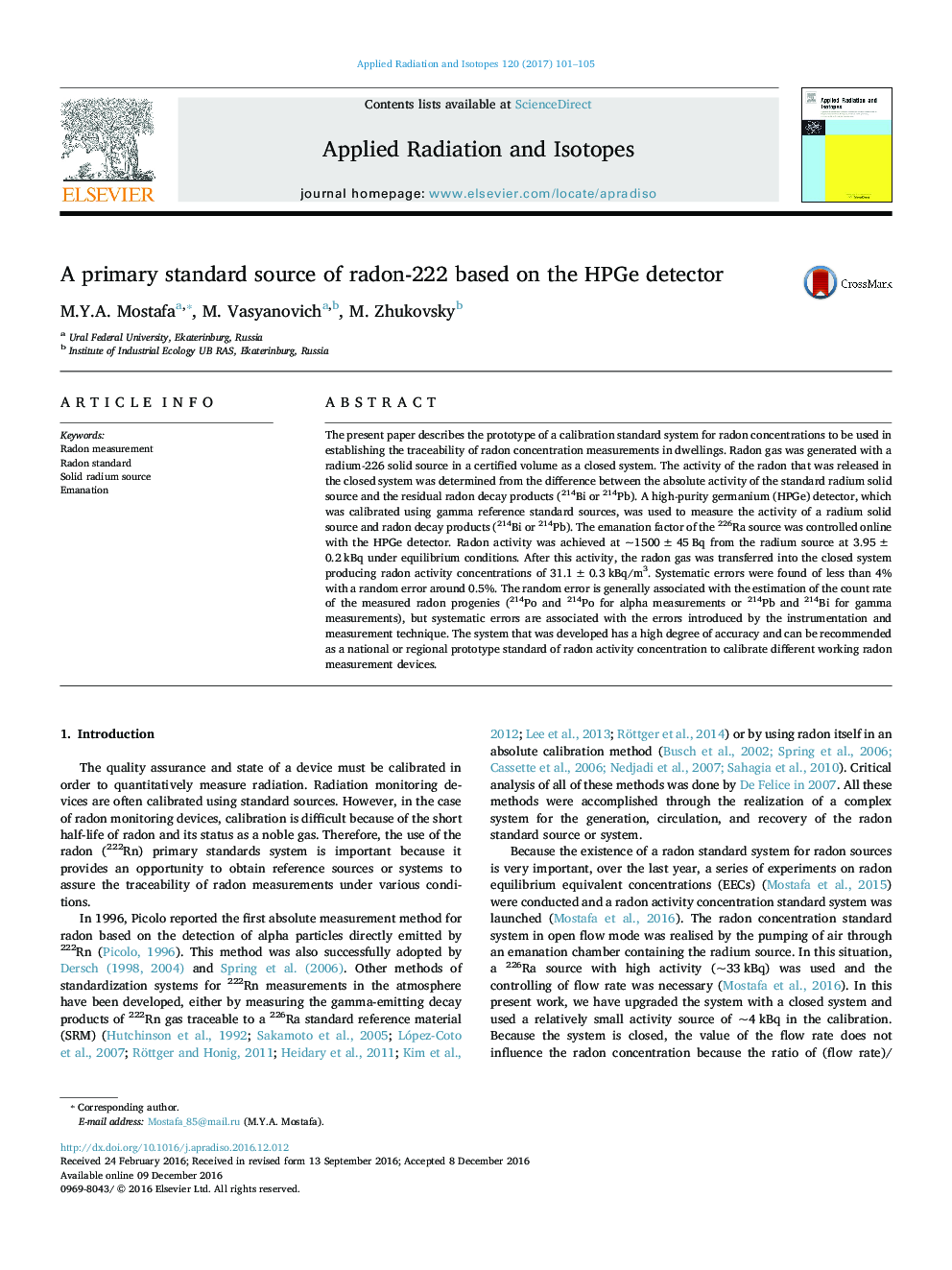| Article ID | Journal | Published Year | Pages | File Type |
|---|---|---|---|---|
| 5497794 | Applied Radiation and Isotopes | 2017 | 5 Pages |
Abstract
The present paper describes the prototype of a calibration standard system for radon concentrations to be used in establishing the traceability of radon concentration measurements in dwellings. Radon gas was generated with a radium-226 solid source in a certified volume as a closed system. The activity of the radon that was released in the closed system was determined from the difference between the absolute activity of the standard radium solid source and the residual radon decay products (214Bi or 214Pb). A high-purity germanium (HPGe) detector, which was calibrated using gamma reference standard sources, was used to measure the activity of a radium solid source and radon decay products (214Bi or 214Pb). The emanation factor of the 226Ra source was controlled online with the HPGe detector. Radon activity was achieved at ~1500±45 Bq from the radium source at 3.95±0.2 kBq under equilibrium conditions. After this activity, the radon gas was transferred into the closed system producing radon activity concentrations of 31.1±0.3 kBq/m3. Systematic errors were found of less than 4% with a random error around 0.5%. The random error is generally associated with the estimation of the count rate of the measured radon progenies (214Po and 214Po for alpha measurements or 214Pb and 214Bi for gamma measurements), but systematic errors are associated with the errors introduced by the instrumentation and measurement technique. The system that was developed has a high degree of accuracy and can be recommended as a national or regional prototype standard of radon activity concentration to calibrate different working radon measurement devices.
Keywords
Related Topics
Physical Sciences and Engineering
Physics and Astronomy
Radiation
Authors
M.Y.A. Mostafa, M. Vasyanovich, M. Zhukovsky,
